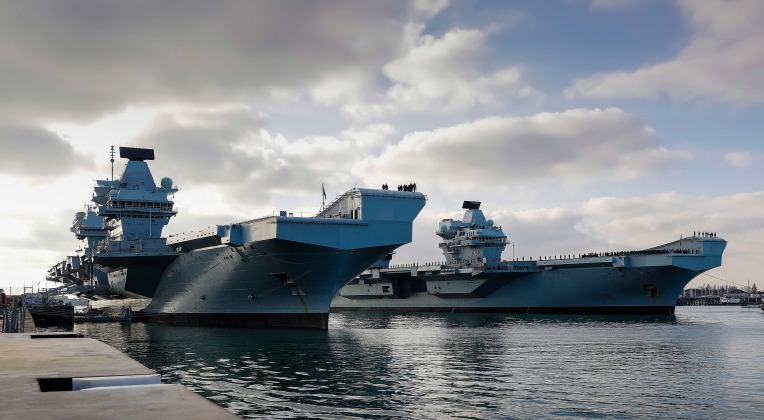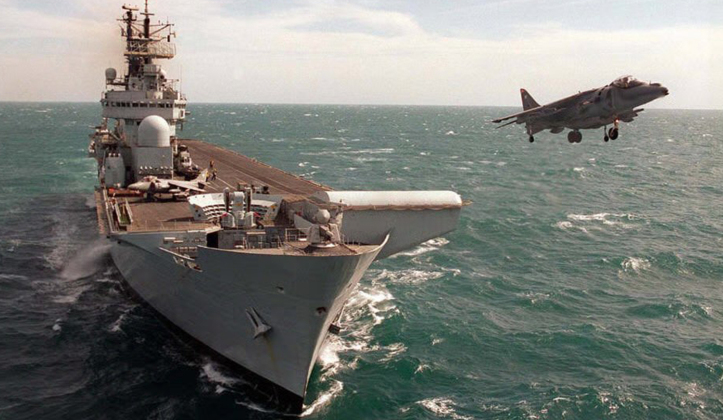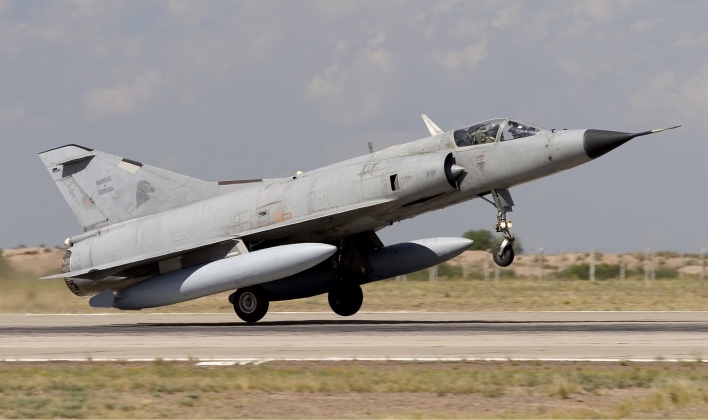The British Royal Navy today fields two sizeable 65,000 ton Queen Elizabeth Class aircraft carriers, which entered service in December 2017 and December 2019, making the country’s carrier fleet larger and more capable than it has been since the early years of the Cold War. While the Navy fielded a sizeable fleet during the Second World War, British carrier programs have left much to be desired ever since and faced frequent cancellations as a result of the country’s economic situation. The Audacious Class carriers, commissioned from 1951, saw two of the four warships cancelled for this reason, while the Centaur Class commissioned in the same period saw four of eight warships cancelled. The Majestic Class planned for the same period saw just one of the six warships laid down commissioned with the others either scrapped or sold to commonwealth countries. The size of the carrier fleet at the time was less than half of that planned as a result, which seriously undermined the British power projection capabilities. The state of the fleet would only get worse from that point, with the four sizeable Malta Class carriers, at over 50,000 tons and each designed to deploy 80 aircraft, all cancelled. After the 1950s, with the loss of much of its Empire, Britain notably curbed its carrier ambitions and its next warship, the first to be named Queen Elizabeth Class, was planned at just two 50,000 ton warships in the 1960s. As the sizes of carriers grew rapidly during the Cold War and combat aircraft became much larger and heavier, this was no longer considered a very large size. Event this program, however, proved to be beyond the country’s budget and due to economic difficulties the ships were cancelled in the late 1960s.

Britain ultimately avoided losing its naval aviation entirely, a field in which the Royal Navy had been a leading pioneer in the pre war era, by commissioning the Invincible Class carriers from 1980s. These were among the lightest warships to deploy fixed wing aircraft and displaced just 22,000 tons each – a similar size to helicopter carriers such as the South Korean Dokdo Class and French Mistral Class. They nevertheless presented the armed forces with a means of retaining some form of carrier aviation at a time when the warships commissioned during and in the aftermath of the Second World War were fast fading into obsolescence and London appeared particularly averse to investing in modernising its power projection assets. Due to their small sizes and short runways the Invincible Class carriers could not deploy conventional fighter jets such as the F-4 Phantom or A-4 Skyhawk used by the United States Navy, and required specialised short takeoff and vertical landing (STOVL) capable jets. Navalised variants of the highly specialised Harrier Jets were thus procured for this role, with the first entering service in 1978. The Harrier’s induction into service made it one of the first fighters of its kind, following closely after the Soviet Yak-38 vertical takeoff and landing (VTOL) fighters which had similar capabilities. Invincible Class ships at first deployed nine Sea King anti submarine warfare helicopters and four or five Harriers jets. Due to their small sizes the ships were envisaged primarily as a means to protect British destroyer fleets from enemy submarines during blue water operations using helicopters, with the Harrier jets relied on to provide a limited and highly defensive capability. The Harriers’ inability to match cutting edge carrier based fighters such as the F-14 Tomcat and F-4 Phantom deployed by U.S. carriers meant that they were relied on only to provide a secondary capability.

The role of the Invincible Class carriers would come to change profoundly with time, with the Argentine invasion of the British territory of the Falklands Islands in 1982 leading London to realise the need for power projection assets to protect its overseas possessions. While the vast majority of the British Empire was gone, key outposts of British power still remained from Gibraltar and the British Cayman Islands to the Falkland Islands and the British Antarctic Territory. The Invincible Class warships were thus refitted for a power projection role, with each deploying 18 Harrier jets and just four accompanying helicopters. These included both the fighter variant of the Harrier as well as the Harrier GR3 attack jet with a dedicated air to ground role similar to that of the American A-4. While they left much to be desired in their combat capabilities relative to most fighters of their time such as the F-15 or MiG-23, they were more than a match for the Argentinian Air Force’s fleet of second generation French Mirage derivatives and dated A-4 attack jets which were not only old but also questionably piloted. The discrepancy in pilot quality in particular led to no losses among British carrier based fighters, while British forces downed 31 Argentine jets.

The three Invincible Class light carriers were decommissioned from 2005 to 2014, and despite their limited capabilities and extremely small sizes the class was considered a success due to its performance against Argentina and effective defence of the British fleet. This success was particularly notably considering that the warships were been pressed into a role for which they were not initially envisaged. The Falklands incident is thought to have influenced the British leadership to invest in the country’s first full sized carrier warships in decades with the Queen Elizabeth Class carrier program. While the new relatively low cost ships lack the advanced power projection capabilities of more advanced supercarriers such as the U.S. Nimitz and Gerald Ford Classes and upcoming Chinese Type 003 Class, such as steam or electromagnetic catapult launch systems or the ability to deploy fixed wing AWACS aircraft such as the E2 Hawkeye or KJ-600, the vessels nevertheless represent a resurgence in British carrier capabilities and come at approximately three times the tonnage of the Invincible Class. Budgetary issues have meant that the Royal Navy may struggle to acquire the full fighter complement for both new ships, as the STOVL capable F-35B stealth fighters cost well over $130 million each to acquire and have the highest operational costs of any fighter currently in production worldwide. The Queen Elizabeth Class warships will however, even if operating at a fraction of their aircraft carrying capacity, very likely represent the most successful British carrier program in over sixty years – if anything by virtue of the fact that it is the first full sized carrier program to have been seen through to completion since the Second World War.
